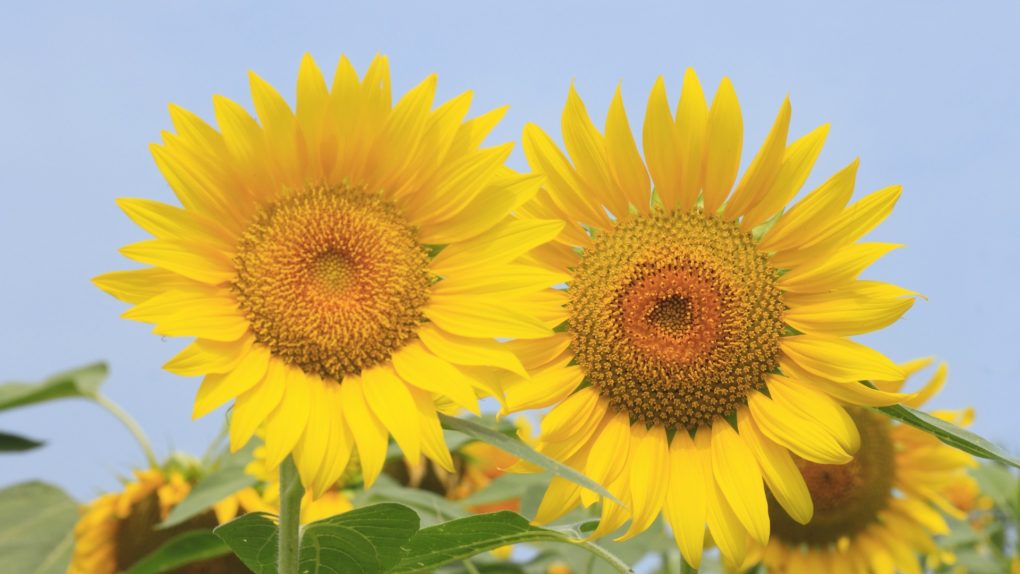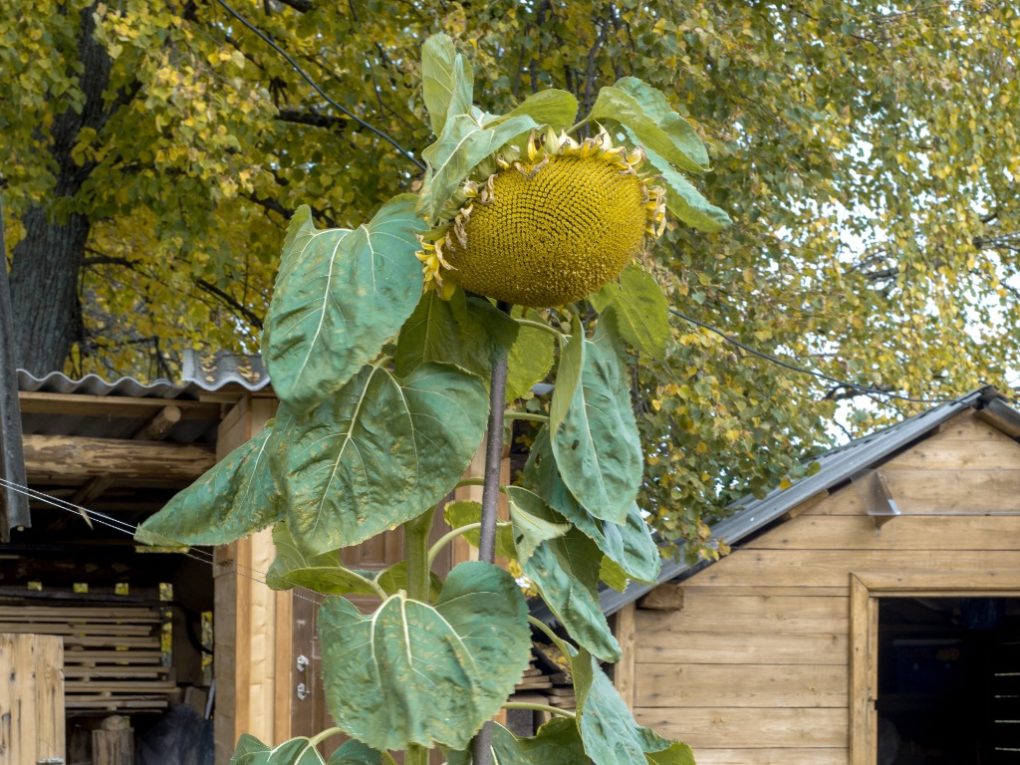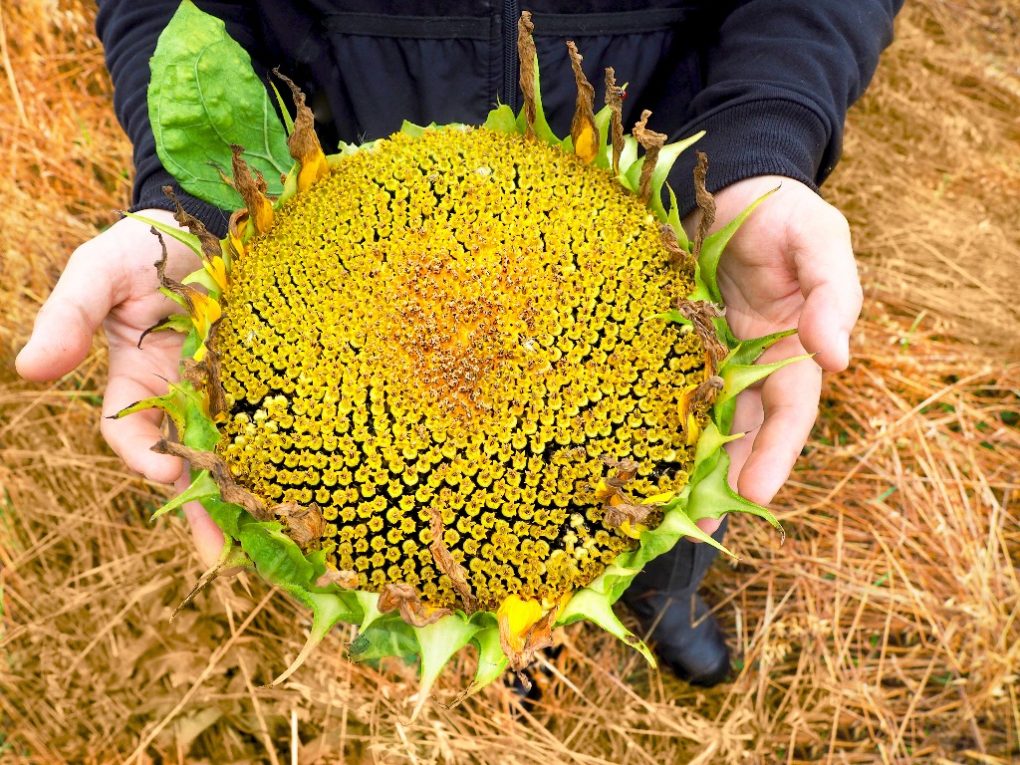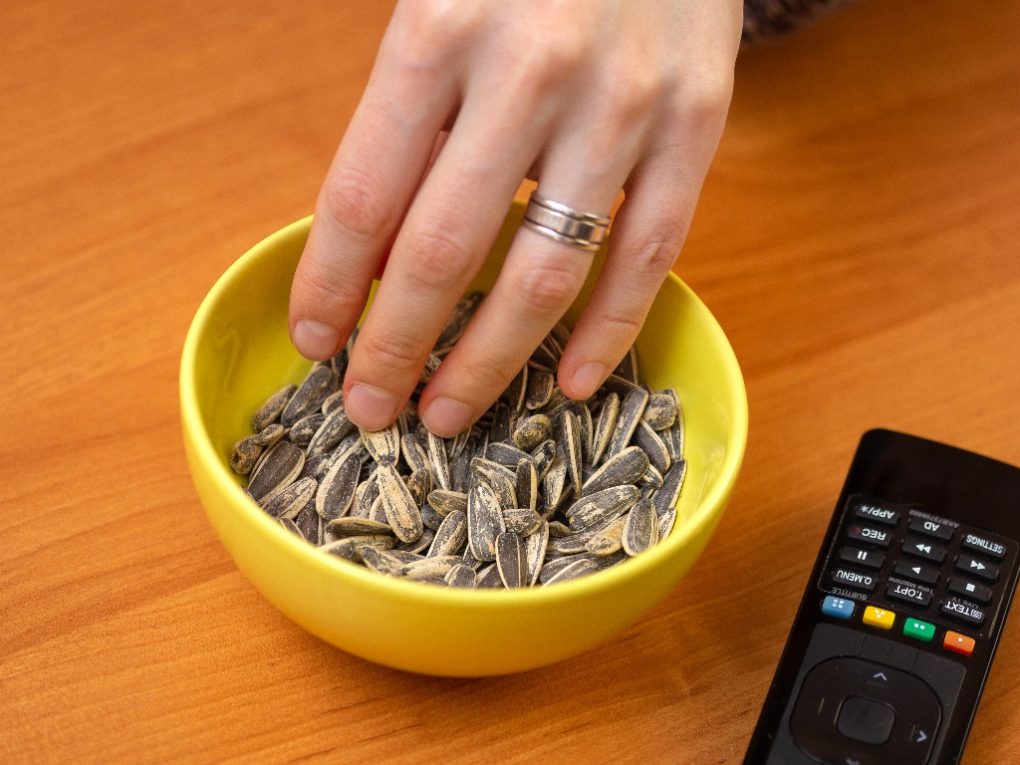Giant Sunflower: Growing Tips and Benefits
Giant sunflowers are popular for their impressive height and large flower heads. These sunflowers can grow up to 16 feet tall and produce blooms that can reach up to 10 inches in diameter. They are a favorite among gardeners and are often grown for their aesthetic appeal and practical uses.

One of the most common uses for giant sunflowers is to harvest their seeds, which are rich in oil and can be used for various purposes. The seeds can be roasted and eaten as a snack, or used to make sunflower oil, often used in cooking and baking. In addition to their practical uses, giant sunflowers are also a popular choice for gardeners looking to add height and color to their gardens.
Table of Contents
What are Giant Sunflowers?
Giant Sunflowers are a variety of sunflower that can grow up to 12-15 feet tall and produce flowers that can reach up to 18 inches in diameter. These sunflowers are known for their impressive size and are often grown for their ornamental value or for their seeds, which can be used for food, oil, or birdseed.
There are several different types of Giant Sunflowers, each with unique characteristics. Some popular varieties include Mammoth Sunflowers, Kong Hybrid Sunflowers, and Mongolian Giant Sunflowers. These varieties differ in size, color, and growth habits, but all share the same impressive size and beauty.
Giant Sunflowers are relatively easy to grow, requiring only well-drained soil, plenty of sunlight, and regular watering. Additionally, they are known for attracting pollinators, such as bees and butterflies, making them an excellent addition to any garden.
History of Giant Sunflowers
Giant sunflowers have a rich history that dates back centuries. Originally, they were native to North America and were further developed in Eastern Europe in the 18th century. The classic giant sunflower can easily reach 12 feet in height, with their heavy flowers averaging about one foot across. These plants have strong stems and the flowers have yellow petals surrounding a brown center.
By the late 19th century, Russian sunflower seed entered the US. By 1880, seed companies were advertising the ‘Mammoth Russian’ sunflower seed in catalogues. This seed name was still offered in the US in 1970, nearly 100 years later. This shows the popularity of giant sunflowers in the US, and how they have become a staple in many gardens nationwide.
Nowadays, giant sunflowers are grown for a variety of reasons, including their beauty, as well as for their seeds, which are often used for cooking and snacking. They are also a popular choice for gardeners who want to attract pollinators, as they host several butterfly varieties.
The history of giant sunflowers is intertwined with the history of sunflowers in general. Humans have cultivated sunflowers for thousands of years, dating back to ancient North and South American civilizations. They were used for food, oil, medicine, and even as dye for textiles.
Types of Giant Sunflowers
Giant sunflowers are a popular addition to gardens and come in various types. Here are the most common types of giant sunflowers:
Common Varieties

The most common giant sunflowers are the Russian Giant and the Mammoth sunflower. These sunflowers can grow up to 12-15 feet tall and have large yellow flowers reaching 20 inches in diameter. They are often used in competitions for the tallest or largest sunflower.
Another common variety is the American Giant sunflower, which can grow up to 16 feet tall with flowers up to 10 inches in diameter. This variety is often used in commercial production for its large seeds.
Hybrid Varieties
Hybrid varieties of giant sunflowers have been developed to produce specific characteristics, such as larger flowers, stronger stems, or different colors. Some popular hybrid varieties include:
- Sunzilla: This variety can grow up to 16 feet tall and has flowers that can reach up to 24 inches in diameter.
- Kong: This variety can grow up to 14 feet tall and has flowers that can reach up to 16 inches in diameter.
- Teddy Bear: This variety has fluffy, golden-yellow flowers that resemble teddy bears.
Hybrid varieties can be a great option for gardeners experimenting with different types of giant sunflowers and creating a unique garden display.
Growing Giant Sunflowers
Planting
Giant sunflowers are easy to grow from seeds. They require full sun and well-draining soil. It is best to plant them directly in the garden after all danger of frost has passed. Alternatively, they can be started indoors in peat pots, but care must be taken to keep them from getting root-bound.
Plant the seeds no more than an inch deep and about six inches apart. Once they have germinated and grown to about three inches tall, thin the seedlings, leaving the strongest plants about 18 inches apart.
Watering and Fertilizing
Water the sunflowers deeply once a week, and more frequently during hot, dry weather. It is important not to overwater, as this can lead to root rot. Instead, fertilize the plants with a balanced fertilizer once a month during the growing season.

Care and Maintenance
As the sunflowers grow taller, they may need to be staked to prevent them from toppling over. It is also important to watch for pests such as aphids and caterpillars, which can damage the plants.
Deadhead the sunflowers as they fade to encourage new blooms. Once the flowers have finished blooming and the seeds have matured, cut off the flower heads and hang them upside down to dry. The seeds can then be harvested and stored for planting or roasting.
Harvesting and Storing Giant Sunflowers
Giant sunflowers are a popular choice for gardeners who want to add a touch of drama to their landscape. These tall, vibrant flowers can grow up to 12 feet in height, and their large, colorful blooms can reach up to 2 feet in diameter. It’s important to know when and how to harvest and store giant sunflowers so that you can enjoy their beauty for as long as possible.
When it comes to harvesting giant sunflowers, timing is everything. You’ll want to wait until the flowers have matured and the seeds are ripe before you harvest them. This will typically occur in late summer or early fall, depending on your location and the weather conditions in your area.
Look at the back of the flower head to tell if your sunflowers are ready for harvest. If the petals have fallen off and the back of the head has turned brown, the seeds are likely ready to be harvested. You can gently rub your hand over the seeds to see if they come off easily. If they do, it’s time to harvest.

When harvesting your giant sunflowers, use sharp, clean scissors or pruning shears to cut the head off the stem. Be sure to leave a few inches of stem attached to the head to hang it up to dry. You can also remove any leaves or other debris from the head now.
Once you’ve harvested your sunflowers, it’s time to start the drying process. You can hang the heads upside down in a cool, dry place like a garage or shed. Be sure to hang them in a way that allows air to circulate the entire head. Covering the heads with a paper bag or cheesecloth is also a good idea to keep them clean and free from pests.
After a few weeks of drying, your sunflower heads should be ready to store. You can remove the seeds from the head by gently rubbing them with your hands or using a fork to scrape them off. Once you’ve removed all the seeds, store them in an airtight container such as a glass jar or plastic bag. Be sure to label the container with the date and variety of sunflower so that you can keep track of your harvest.
With a little patience and know-how, you can enjoy the beauty and bounty of your giant sunflowers for months to come.
Uses of Giant Sunflowers
Giant sunflowers are beautiful and have several uses, and can be used for decorative purposes, edible seeds, and oil production.
Decorative Purposes
Giant sunflowers are commonly grown for their decorative purposes. They add a touch of beauty and color to gardens, landscapes, and even indoor spaces. They can be cut flowers for vases, floral arrangements, and centerpieces.
They can also create a natural fence or privacy screen in the garden. The tall stalks and large flower heads provide a natural barrier and add color to the landscape.
Edible Seeds
Giant sunflowers produce large seeds that are edible and nutritious. They can be eaten raw, roasted, or used in various recipes. Roasted sunflower seeds are popular in trail mixes, granola bars, and baked goods.
Seeds are also good sources of protein, fiber, and healthy fats, and can be topped on salads, yogurt, and oatmeal.

Oil Production
Giant sunflowers produce oil-rich seeds that can be used to produce sunflower oil. Sunflower oil is a popular cooking oil that is low in saturated fats and high in healthy fats. It is also used to produce margarine, biodiesel, and soap.
The oil can be extracted from the seeds using a press or solvent extraction. The extracted oil can be used for cooking, frying, and salad dressings.
Giant sunflowers have several uses and can be a valuable addition to any garden or landscape.
Conclusion
Giant sunflowers are a beautiful addition to any garden, providing a stunning focal point with their towering height and large, vibrant blooms. However, they require a lot of attention and care to grow successfully.
Choosing the right variety for your space is important, as is providing the plant with full sun and well-draining soil. Giant sunflowers are greedy feeders and drinkers, so it is important to fertilize and water them regularly.
It is also important to be patient as giant sunflowers can take up to 95 days from germination to full bloom. Deadheading spent blooms can help promote continued blooming throughout the season.
Giant sunflowers can be a rewarding and impressive addition to any garden with the right care and attention. It is important to remember that they are not low-maintenance plants and require a commitment and effort to grow successfully.
